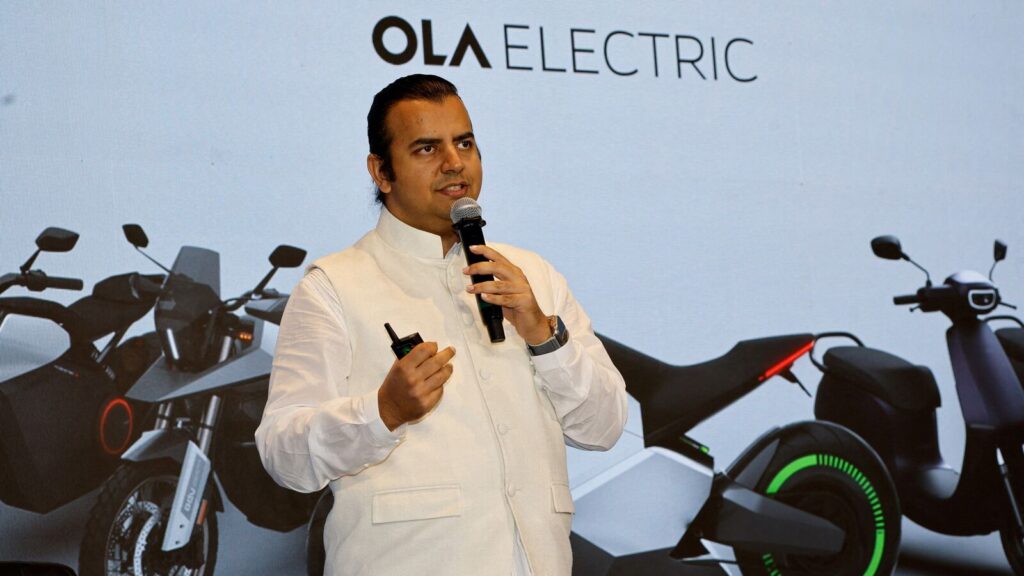The Ministry of Heavy Industries has inquired about why there is a gap between the number of sales stores and service centres despite the company’s public claims that all its outlets offer after-sales services, according to two people aware of the matter.
Last month, the ministry asked Ola Electric to clarify the variation in the sales reported by the company and the registration of its new scooters on the Vahan portal.
Alongside, it entrusted the Automotive Research Association of India (ARAI) and the International Centre for Automotive Technology (ICAT) to ascertain Ola founder Bhavish Aggarwal’s earlier claim of all 4,000-odd showrooms in the country having service centres to address customer complaints.
“A reply was shared with the ministry saying that about 1,400 service centres are ready, which can cater to a large share of customers for now,” a company executive aware of the matter said.
In an investor presentation released on 1 April, the company said it has 4,436 stores across the country. Of this, 3,365 are owned by the company while the rest are “network partners”.
However, the service network was at 1,434 or about 42% of the total company-owned stores.
In a statement on 25 December 2024, Aggarwal said, “With our newly opened stores co-located with service centres, we have completely redefined EV purchase & ownership experience, setting new benchmarks with our #SavingsWalaScooter campaign.”
Since October last year, Ola Electric has been facing regulatory scrutiny after thousands of complaints against its scooters emerged. It received a show-cause notice from the Central Consumer Protection Authority (CCPA), following which a comprehensive investigation was launched into the company.
After facing regulatory scrutiny and social media backlash, the company announced the rapid expansion of its sales and servicing network.
“Our average service time, the TAT (Turnaround time) of service, has come down from almost 2.5, 3 days in October, which is when our service issues were the highest down to 1.1 days,” Aggarwal said during the company’s earnings call on 7 February. “The trend is continuing downward. So we — our service experience and SLAs (service level agreements) are now pretty much best in class in the OEM industry.”
Ola Electric did not respond to emailed queries.
Incentives hit
The government’s inquiry into Ola Electric’s sales is also linked to subsidies under FAME-II or the second leg of Faster Adoption and Manufacturing of Electric (and Hybrid) vehicles, and the PM E-drive. Under these schemes, automakers have to sell vehicles at a discount, and the government reimburses the difference.
Automakers must ensure a minimum warranty requirement under the schemes to avail subsidies. For instance, electric two-wheeler makers have to provide a warranty of at least three years or 20,000 km usage, whichever is earlier. They also have to ensure adequate facilities for the after-sales service requirements.
In October, the ministry of heavy industries asked its testing agency The ARAI to look into consumer grievances against Ola Electric, since the company is expected to maintain the necessary number of service centres to attend to all consumer issues under the PM E-drive and FAME-II guidelines.
The ARAI and the ICAT provide companies with authorisation certificates necessary to secure incentives from the government.
Mint reported on 19 March that Ola Electric could lose out on PM E-drive incentives due to its vehicle registration woes. An electric two-wheeler maker could receive an incentive of ₹10,000 per unit in FY25, which would be halved in FY26. Since Ola Electric’s registration issues started in February and continued through March 2025, the company could not register all its FY25 sales by the end of the year, potentially reducing its incentives.
In February, the company informed that renegotiations with two agencies disrupted its registration process, which resulted in only about 8,653 units being registered in the month even though the company claimed to have sold over 25,000 units.
The company, however, did not disclose its March sales and instead relied on the Vahan portal data of 23,450 registrations. The backlog of vehicles that have been sold but remain unregistered is still around 16,000, which it said would be cleared in April.
As Ola Electric grapples with multiple troubles, rivals are closing in. In March, Bajaj Auto Ltd and TVS Motors Ltd overtook Ola Electric, which had claimed to have the highest market share in February.
Bajaj Auto led the electric two-wheeler market with 34,863 new registrations in the final month of FY25, a nearly 62% increase over the previous month’s 21,537. Hosur-based TVS Motors Ltd recorded 30,454 new registrations, a month-on-month growth of 61%.
Since the beginning of the registration issue in February, Ola Electric’s share price has fallen by over 16% compared to a 9% fall in BSE Auto index.
Source:https://www.livemint.com/companies/news/ola-electric-service-centres-sales-outlets-gap-govt-scrutiny-11744022447695.html

